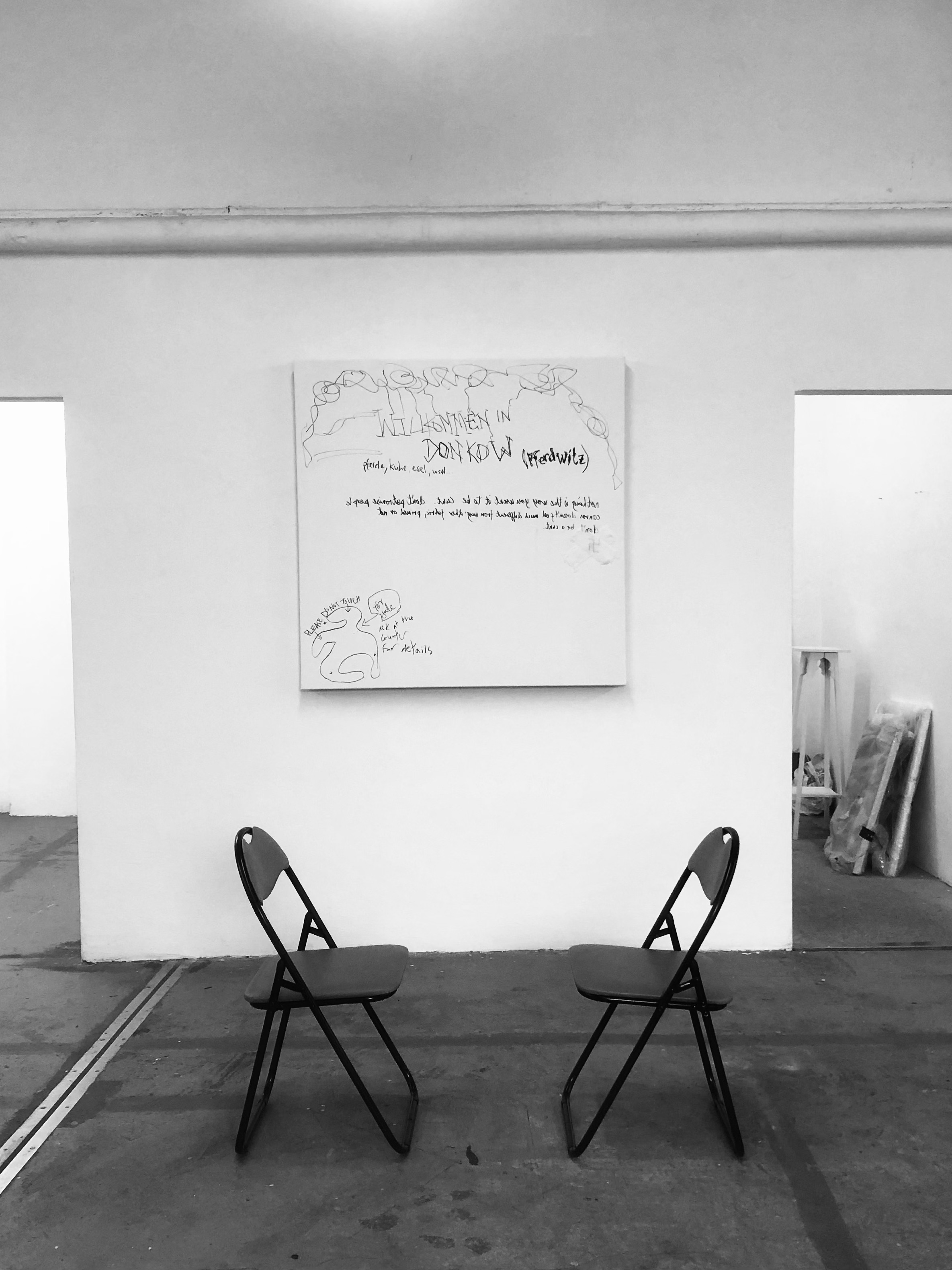KAVANISM
EXPERIMENTING WITH new forms
"Kavanism is coming from the Hebrew word „Kavana“ intention"
PROLOG | PERSÖNLICHES
(Interview about Kavanism with Deeds.News Berlin) Avi, imagine that you would receive us in the studio or at home. Where do we talk together, where do we meet? We would meet at my beautiful Altbau’s studio, located in a former Greek restaurant in Schoeneberg. Maybe we are sitting in your favorite place? My favorite place is the walls of the studio and the secrets they hide inside. You were born in Haifa, Israel, in 1973. Today you live and work in Berlin, Germany. What stations and people have particularly shaped you in your life so far? Most of my life I grew up in Haifa, in the Bat Galim neighborhood at the foot of the mountain and by the sea. At a relatively late age, 27, I took a backpack and traveled in Spain. I’ve been living there for a year. I’ve also lived in Tel Aviv for a short time but I didn’t like the „big city“ that much. I believe that most of my influence comes from my home, my parents who immigrated from Morocco to Israel, and on the other hand the Israeli environment, most of which was based on European culture and the memory of the Holocaust. As a child I often felt foreign, but over the years I found love and inspiration in that feeling.
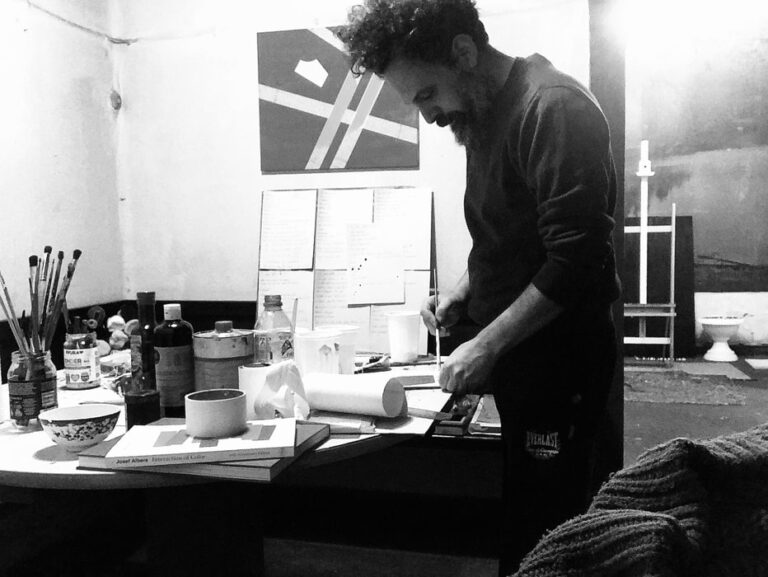
Which writers do you find exciting at the moment and which books can be found on your bookshelf? Our house is full of books, they almost took over, they are next to the bed, behind the reading lamp and under, in the kitchen cupboards, everywhere. Which books have influenced or shaped you? The first of them was in my twenties, “Life as a parable” by the Israeli writer Pinchas Sade. It was his first book written in the very young Israel, in 1958, that discussed personal thoughts and questions about life as an individual and not as a collective. What are you currently reading and where does the book lie at hand? Lately, it’s been hard for me to devote myself completely to just one book and to disconnect myself. I’m so excited about projects that are coming to fruition in my life right now that I myself write books in my head every day. But the books surrounding our bed a like a guardian golem, watching us while we sleep. What music do you listen to and when? Almost every morning I do 5 minutes of physical excercise to the sounds of Stravinsky’s early piano sonatas, I highly recommend it!
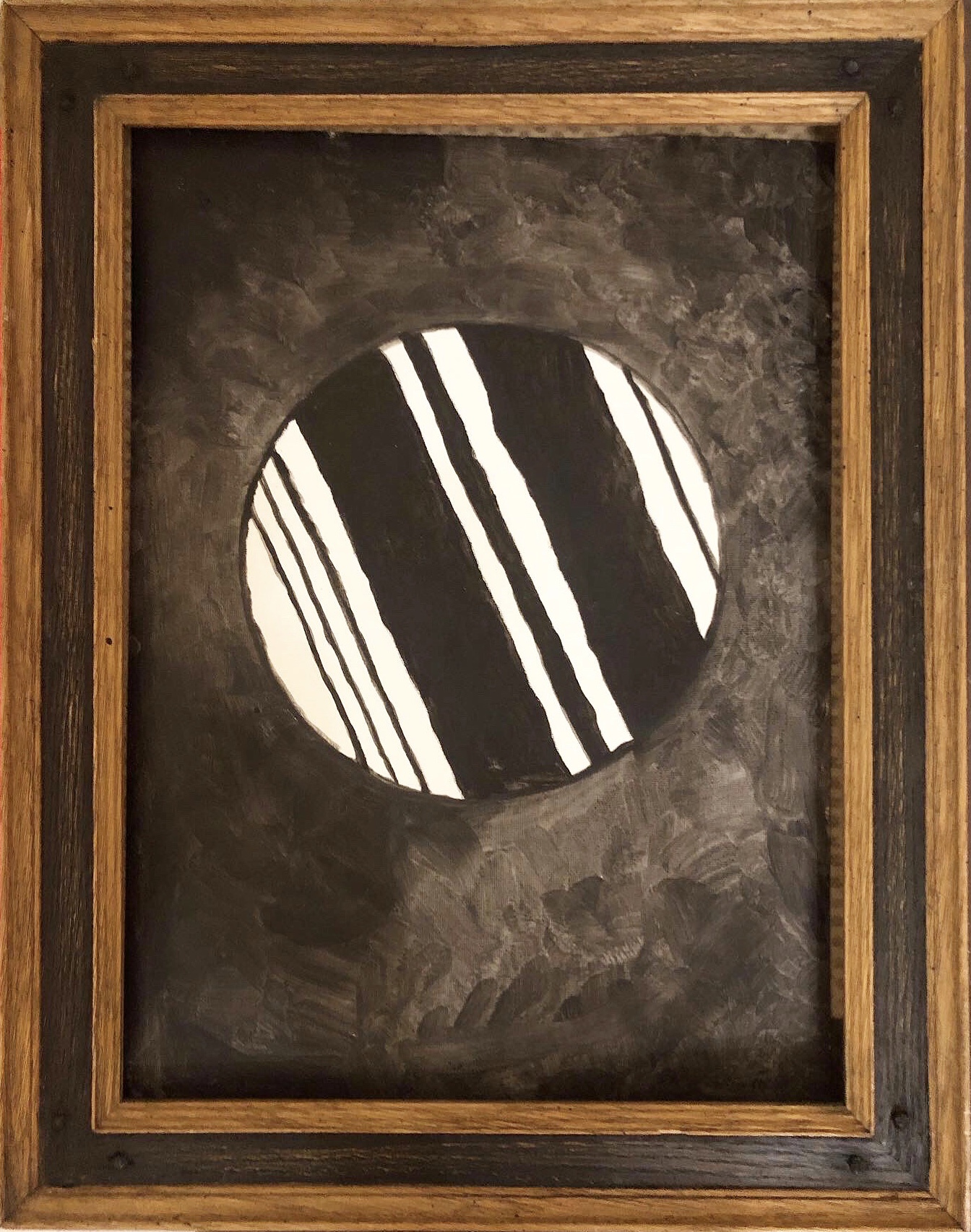
Do you find your work Kavanism relevant to our world today? Yes, Kavanism started while I was trying to improve my brushstrokes. As I love lines, trough the Kavanism I started experimenting with a single interrupted line, a broken line that comes to represent what I call the ''change'', the crack or the desire to detach from the course of my own current stream of thoughts and control to the point of the line creating a life of its own.
Let's go to your kitchen, If you were to cook something for us, what would it be? My garlic hummus recipe. Those who come to the opening of my next exhibition will have the opportunity to taste it. What is your favourite food? Any food, except meat, I’m open to everything! What do you think about breakfast? A morning Shabbat at Gina’s, Vita’s and Claudio’s place, an Italian restaurant on Akazienstraße 10 in Schoeneberg, there is nothing better than eating among good friends. What kind of sport or compensation do you do for your artistic work? Meditation, every morning, at least between 10 to 30 minutes, it saved my life! Do you have any special passions (hobbies) that you are passionate about, and if so, which ones? In addition to painting, I compose music and play the double bass. But my favorite hobby is walking with my wife in nature on weekends.
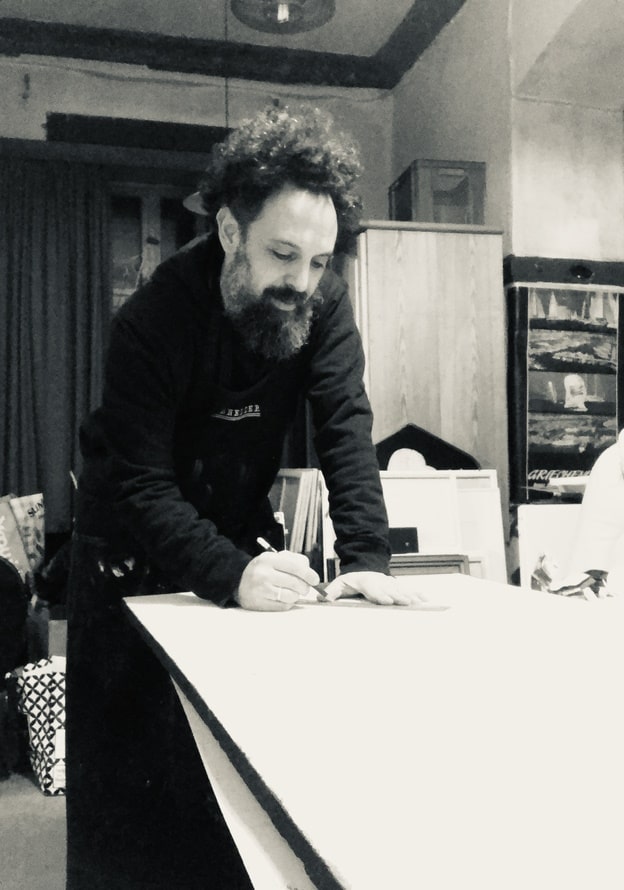
INTERVIEW | KÜNSTLER + POSITION
We would like to briefly introduce your artistic career. You studied at the Wizo Haifa Academy of Design in Israel, and musical composition in Berlin with the composer and Bach scholar Professor Derek K. Remeš. You were first exposed to the art of painting by your mother, Esther, an Israeli painter. Your father owns a paint shop. Did we miss something? If so, tell us about other stages in your artistic education.
How did you get into art? Why art?
During my military service I worked in a warehouse that supplied materials to the ships of the navy. For hours I would watch the practitioners who came in every morning to work on different machines, every morning the same routine, the same procedure. I think it really stressed me out. I was only 20 years old and that’s not how I saw my life ahead. I signed up for evening classes while in the army, to learn shop window design, and the week I was released from the army at the age of 21, I became the chief designer for a Major pharmaceutical company. I did that for 7 years or so.
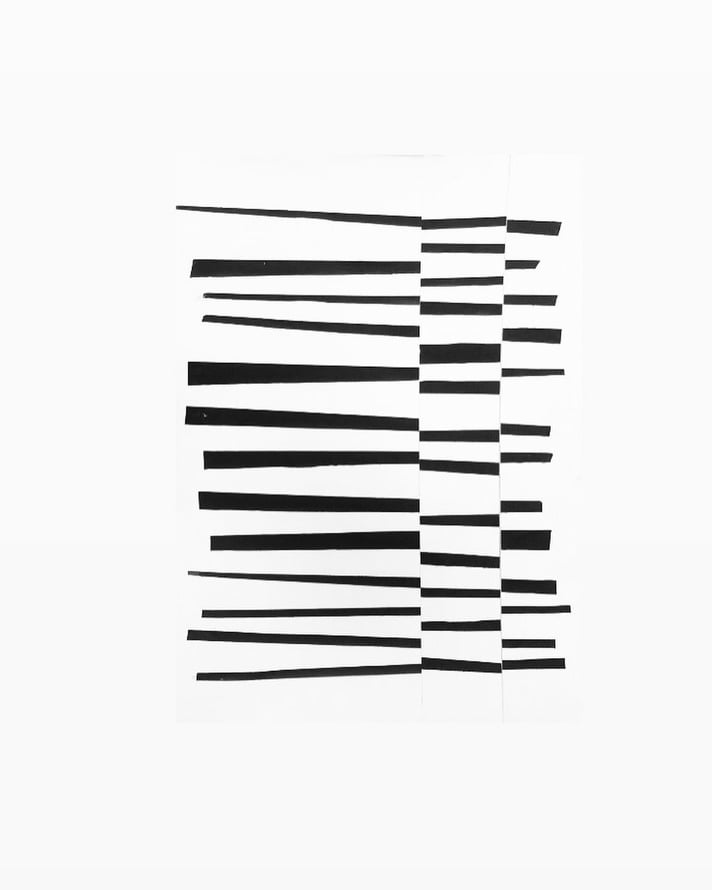
Avi Albers Ben Chamo, Kavanism series: broken stripes on white
What is currently making you happy?
Walking in nature.
What is currently scaring you?
Since I started meditating I am less scared.
Do you believe that art has a social responsibility? And what do you think it can achieve?
Certainly, I don’t see any need for art whose role is not to create change. Any art that is only for sale or for ego or success is meaningless to me. To me art is an expression of a deep intention and the viewer knows how to feel what is a true intention, and what is an insincere intention. There are many beautiful works but only a few that survive time and stay relevant. These are the works that express sincere emotion.
THE DEED | DAS WERK: Avi Albers Ben Chamo
Born in 1973 in Haifa (Israel) and living in Berlin, artist Avi Albers Ben Chamo talks about the central message of his artistic work in his interview.
Please describe the core theme and the central message of your work. Introduce us to the work that, in your view, exemplifies or best embodies the message of your work.
Emotions, structure, construction and deconstruction.
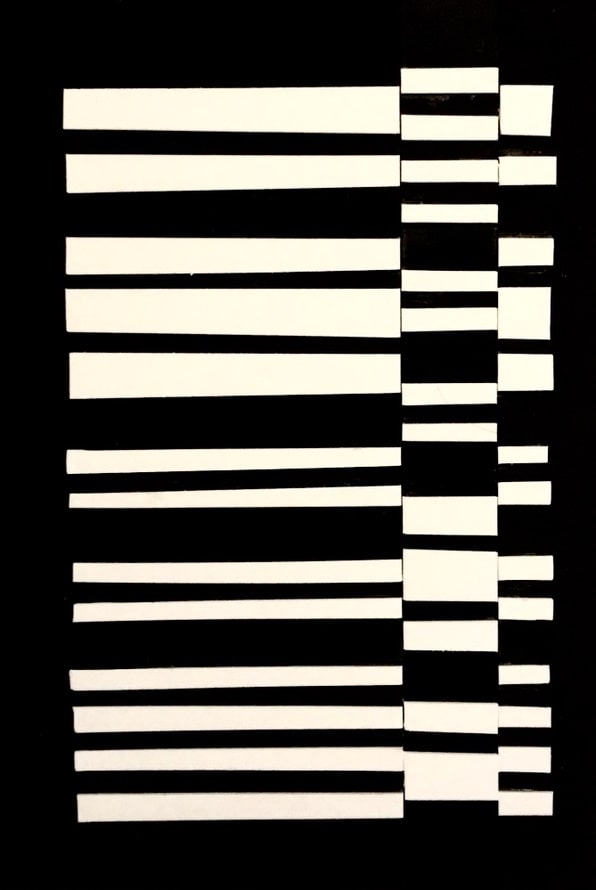
Avi Albers Ben Chamo, Kavanism series: the broken word
Especially in my current works, which I call Kavanism, I feel more and more free to deal with the surface I’m working with, because I know I’m going to destroy it just before the work is finished. But my work is not disconnected from reality, it is a direct reflection of my relationship with society and the political and interpersonal tensions. I am not interested in self-interest only, I do not live in this world in isolation.
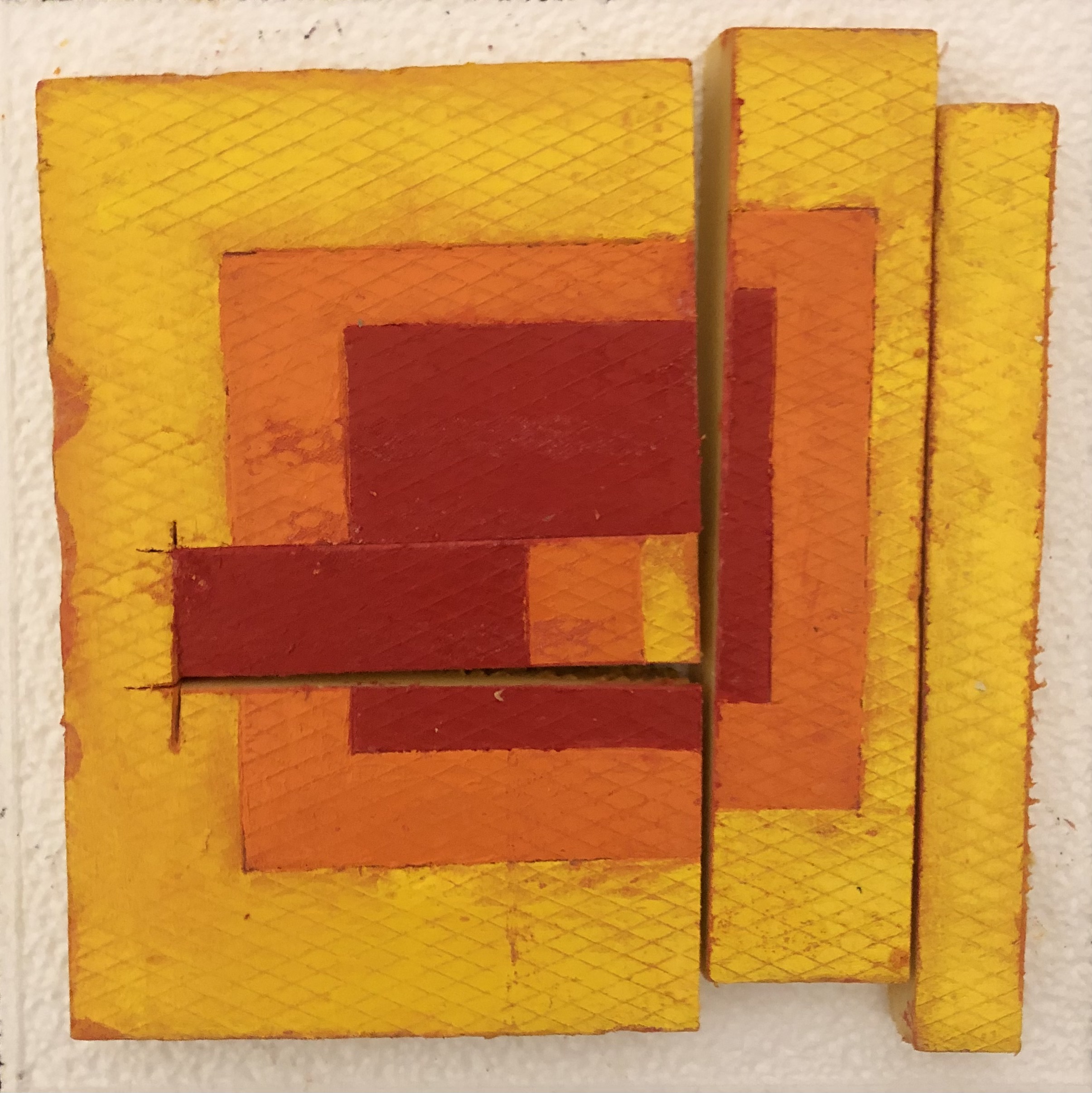
Avi Albers Ben Chamo, Kavanism series: the broken square
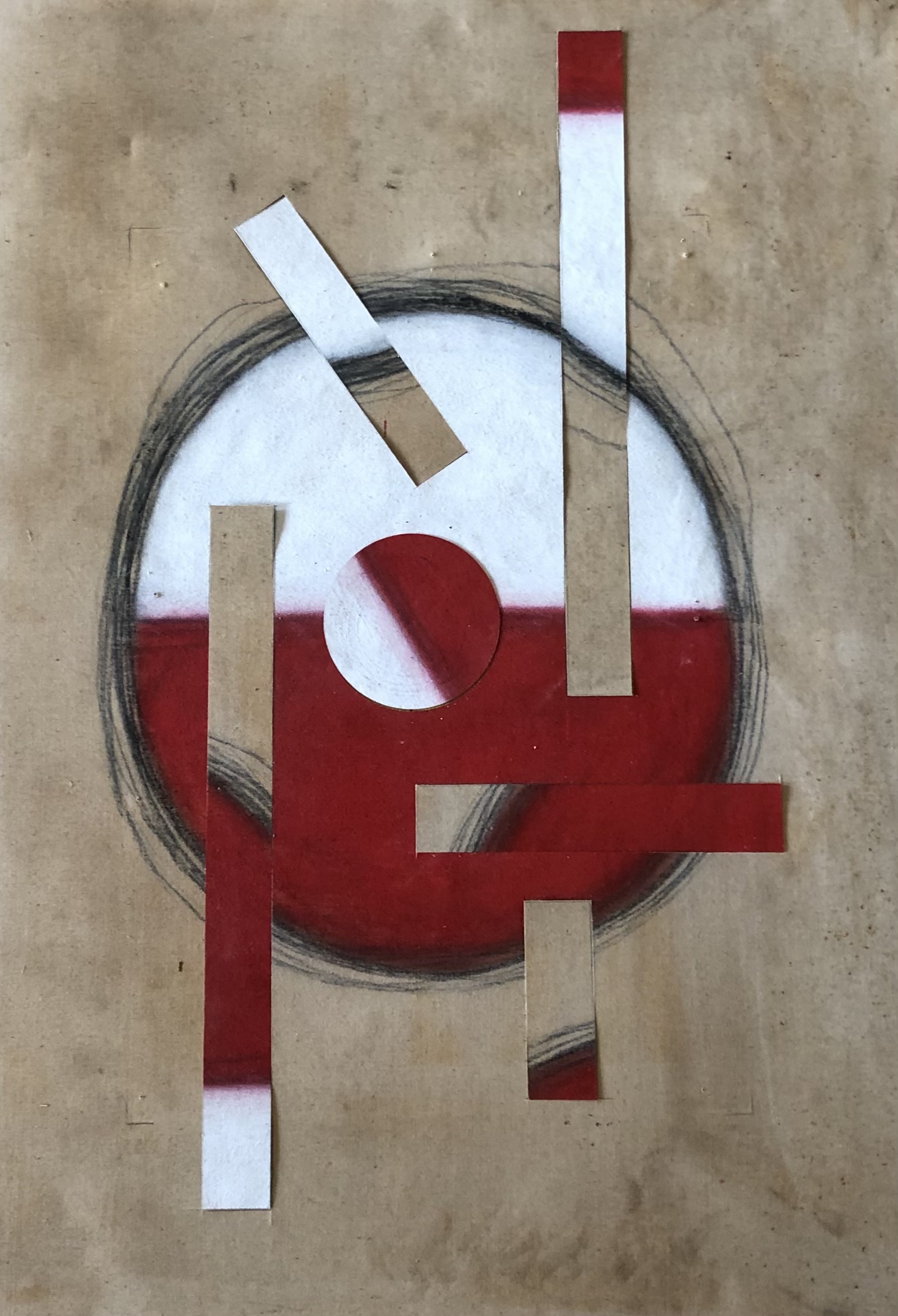
Avi Albers Ben Chamo, Kavanism series: the broken square
How do you protect yourself from too much inspiration in today’s times?
I want to experience reality and reflect it as it is, what’s the point of my art if not to express my opinion on our daily lives?
How much of your work is planned in advance – how much arises intuitively?
I would like to improve, that’s why I am learning to plan ahead, to be more focused on exploring one element at a given moment. But I don’t have a problem if something happens by intuition, on the contrary.
What are your (next) goals?
I am currently all about the preparation of the exhibition of the „Wrong Stripes“ that is part of „Kavanism“. „Kavanism“ is coming from the Hebrew word „Kavana“ intention, kivun, a direction that contain a pure intention.
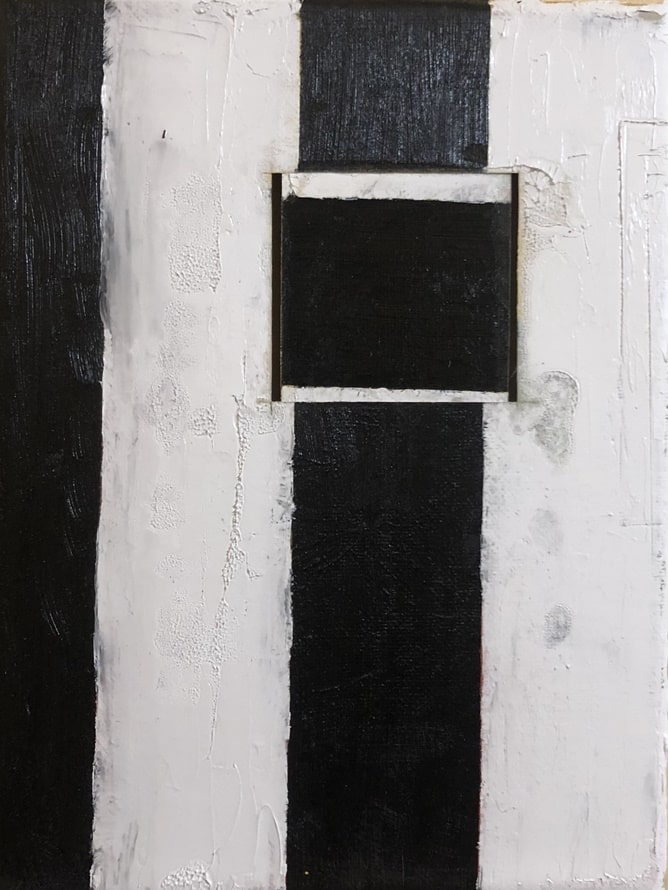
Avi Albers Ben Chamo, Kavanism series: the single broken line
What is your position on the subject of faith? Do you have principles of faith or is there a motto?
I think I can learn a lot from the Bible about us as a society, but I don’t believe in the religious institutions using the words for their own agenda.
Which project would you still like to realise if a lack of time, courage or financial resources did not play a role?
I would be happy if I could deepen my learning about color and light from flowers, sit on a desert island and just paint them all day.
In your view, what are the attributes of good art?
Sincerity.
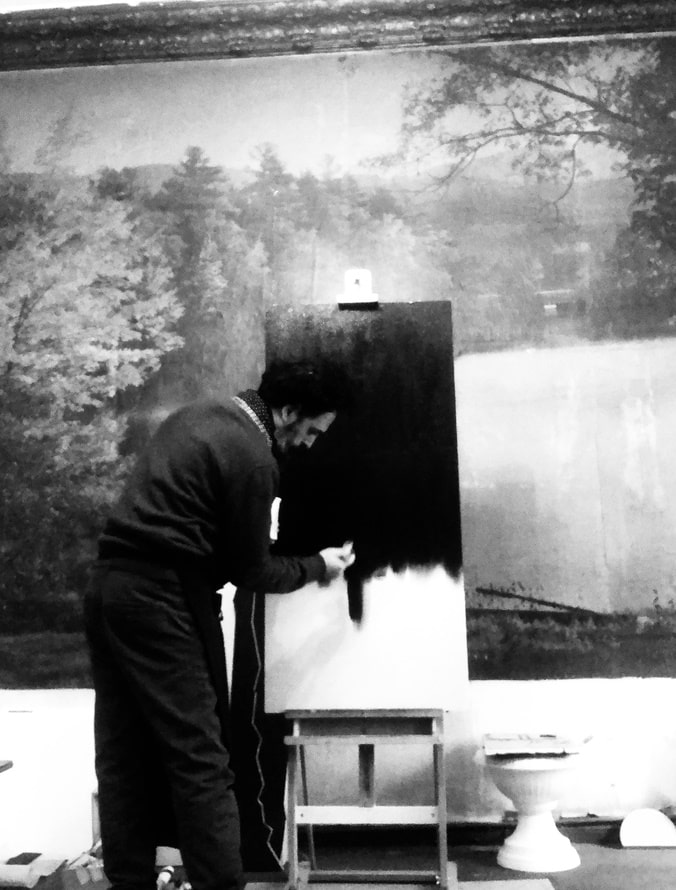
Avi Albers Ben Chamo im Studio
Who do you show a new work to first?
To my wife.
What does the first hour of your day look like?
I really like the mornings, mornings are like new beginnings. Usually every day after I wake up I compose music until 12.00, practice on the double bass for an hour and then go down to work in the studio until the evening.
Interview by
EXHIBITION
All You Need Is Touch "5" + Artist Talk
Museum nacht hanover - villa seligmann 14.7.25
The Struggling artist 26.9.2025 Dispaccio - Napoli
From the 14th The Villa Seligmann presents the work "Touch" by the artist Avi Albers Ben Chamo.
The idea of "touch" was born one early morning in Sicily when Avi walked through the streets with an empty canvas, "during my three weeks of art residency in Palermo, the openers of the people of Sicily touched my heart deeply, so I hang my canvas in the street walls and inviting them to touch my canvas as an act of gratitude. A year later, Touch 1" found its place in the collection of the Museo San Rocco for Contemporary Art in Trapani.
Avi Albers Ben Chamo is a painter and musician living in Berlin. He was born in Israel and is a member of the Iranian-Israeli peace project "Sistanagila". His work is directly inspired by the writings of his ancestor Rabbi Joseph Messas, a progressive thinker who became Chief Rabbi of Haifa in the 1960s and always wanted to connect people. "All you need is TOUCH" is an invitation to touch, to feel to bridge above disagreements and to meet one's own true beauty in the mirror.
As part of the Night of the Museums 2025, the June from 6.15 pm a meeting with the artist Avi Albers Ben Chamo will take place. The work then remains as a permanent loan in the Villa Seligmann and can be visited at events.
VILLA SELIGMANN Hohenzollernstr. 39, 30161 Hannover, Info@villa-seligmann.de 0511 844887-200 www.villa-seligmann.de
"The Struggling Artist" coin machine, (sculpture) A starving artist is an artist who sacrifices material well-being in order to focus on their artwork.[1] They typically live on minimum expenses, either for a lack of business or because all their disposable income goes toward art projects.
In Dialogue with Touch Tagesspiegel 23.08.24
As much as Touch is about dialog, last week I got an email from the exhibition space to inform me that the work was vandalized. Someone took the freedom not to just touch the work but to write on it with a black marker, and to insult me with very "juicy" words. It was the last thing I was expecting to happen.
I thought the gallery was a safe place, and this was my main downer, belly pain, a sudden violent mental and emotional pain. But that happily diminished while talking to a lot of my friends, supporting and giving me love and advice. Yesterday I brought two chairs to the group exhibition, one for me and one for the person who did it, I left the work on the wall and waited. I still believe in it "True dialogue can be achieved only at a touch distance".
Read: Vandalismus und Nazi-Symbolik in Berliner Galerie
